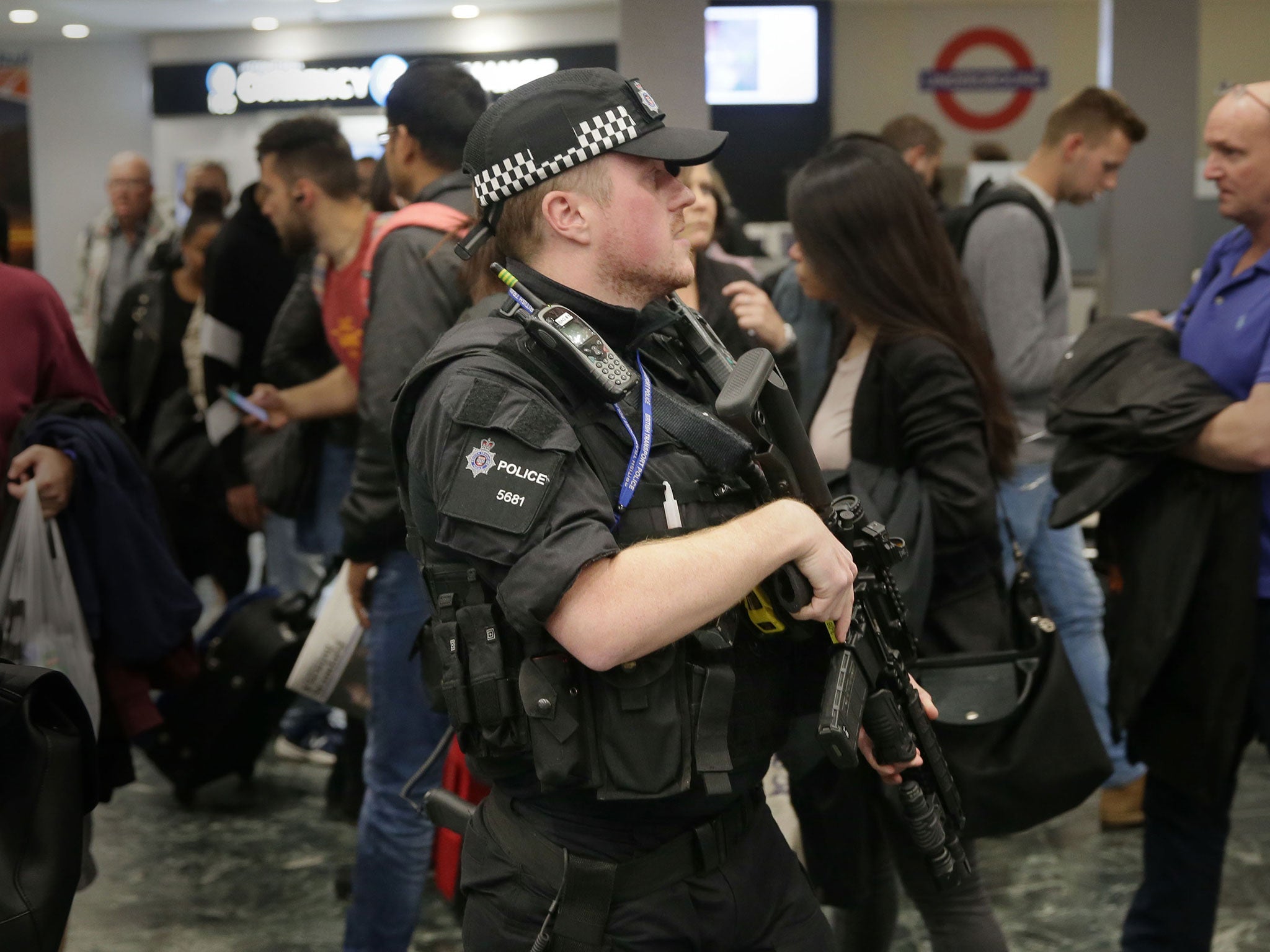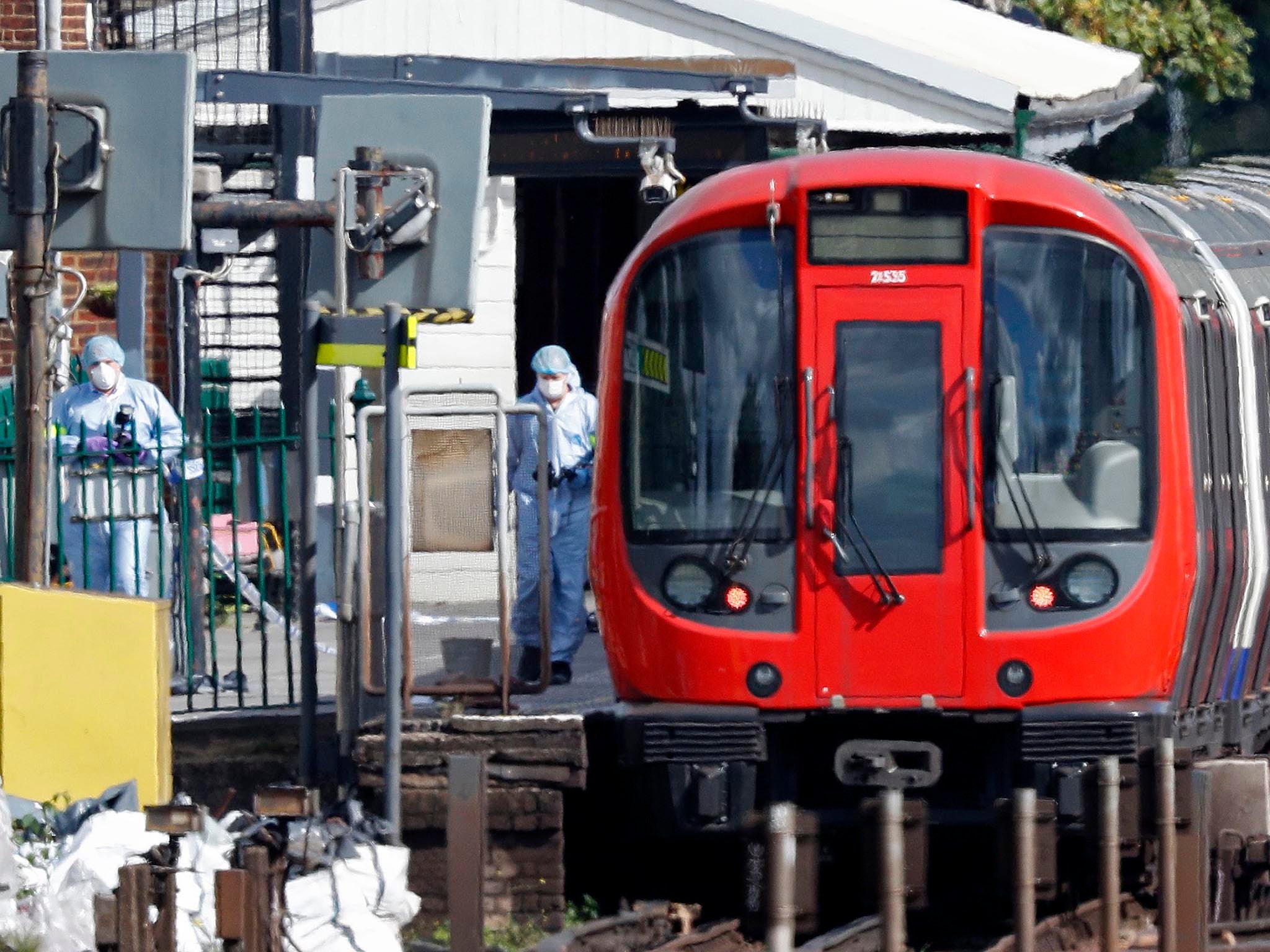London attack: Parsons Green bombers 'still out there' more than 24 hours after Tube blast, officials warn
Terror threat level raised to critical as manhunt continues for suspects

Your support helps us to tell the story
From reproductive rights to climate change to Big Tech, The Independent is on the ground when the story is developing. Whether it's investigating the financials of Elon Musk's pro-Trump PAC or producing our latest documentary, 'The A Word', which shines a light on the American women fighting for reproductive rights, we know how important it is to parse out the facts from the messaging.
At such a critical moment in US history, we need reporters on the ground. Your donation allows us to keep sending journalists to speak to both sides of the story.
The Independent is trusted by Americans across the entire political spectrum. And unlike many other quality news outlets, we choose not to lock Americans out of our reporting and analysis with paywalls. We believe quality journalism should be available to everyone, paid for by those who can afford it.
Your support makes all the difference.The terrorists behind an attempted bombing in London are “still out there”, officials have warned more than 24 hours after a fireball ripped through a packed Tube train.
Theresa May raised the terror threat level to “critical” overnight, signalling that a new attack could be imminent as armed police and soldiers were deployed to patrol potential targets.
CCTV footage has been used to identify the person suspected of planting the homemade device on the District Line before it partially detonated at Parsons Green, injuring 29 people.
But investigators have suggested a cell of terrorists were behind the attempt, which Isis said “targeted a gathering of Crusaders” in a claim of responsibility distributed via its propaganda agencies.
Assistant Commissioner Mark Rowley, the UK’s most senior counter-terror officer, said police were “chasing down suspects”.
“There is no doubt in my mind that those responsible intended to cause great harm and injury,” he added.
The security minister, Ben Wallace, said there were additional fears that the bombing could spark copycat atrocities, with previous terror attacks thought to have pushed extremists into action.
He told BBC Radio 4’s Today programme the Joint Terrorism Analysis Centre raised the threat to “critical” because of intelligence, extremists’ behaviour and the “pace of the investigation”.
“In this case imminent means that we know there was an attempted attack on a Tube yesterday morning, it used the type of explosive similar to that used in Manchester [but] it didn’t go off,” Mr Wallace added.
“We are trying to track down who did it, whether it’s a bomber or bombers…there’s potentially a very dangerous individual or individuals out there and we need to track them down. “
Like the bomb detonated by Salman Abedi at Manchester Arena, the Parsons Green device contained triacetone triperoxide (TATP) and nails.
The sensitive explosive, which can be made in under a day using chemicals widely available on the high street, has become a hallmark of Isis attacks including those in Paris and Brussels, as well as numerous plots across Europe.
Mr Wallace said work was ongoing to prevent people buying the necessary ingredients and accessing bomb-making manuals distributed by terrorist groups online.
The Terrorism Referral Unit has taken down more than 250,000 pieces of extremist information down, he said, adding: “There is definitely more to be done.
“We take a lot down but sometimes these things reappear and we go at them again.”
The Independent was able to access the bomb-making manual believed to have been used for the device in Parsons Green – as well as the Boston Bombings and other massacres - in under five minutes on Saturday morning.
Both al-Qaeda and Isis have details instructions on making improvised explosive devices, with forensics experts working to establish the origin of the latest bomb.
Experts believe the device in Parsons Green used TATP, a “crude” delay timer and fairy lights, but failed to fully explode.
Commuters described a “fireball” bursting from the device and a strong chemical smell, with wires and fairy lights seen trailing from the flaming plastic bucket.
David Videcette, a former counter-terrorism detective in the Metropolitan Police, told The Independent: “The first fireball normally intended to set off the main charge, which is the explosives.
“What often happens with people who try to make bombs is they don’t test the main charge and the initiator together.
“They know they work individually, but the difficulty comes with the chain reaction.”
In a similar incident at Brussels Central Station in June, a suitcase bomb packed with nails burst into flames but did not explode, while the Stockholm attacker who killed five people with a lorry in April was burned by a failed device.
In October, a homemade bomb made using an al-Qaeda manual failed to detonate on a Jubilee Line train at North Greenwich Tube station.
Then in May, a man was found guilty of building a bomb using fairy lights and a pressure cooker with the intention of targeting a railway line in the Midlands.

Recently Isis has issued advice on how to make bombs using the explosive TATP and incendiary devices, while calling for indiscriminate attacks in countries including that UK that are targeting its militants in Syria and Iraq.
In a claim of responsibility issued on Friday night, the terrorist group said the Parsons Green attack was carried out by the “soldiers of the caliphate”.
A statement said the blast targeted “Crusaders”, adding: “What is coming is more devastating and more bitter, Allah willing.”
Isis also claimed responsibility for the attacks in Westminster, London Bridge and Manchester, when the terror threat was also briefly raised to critical.
Raising the terror status to its highest level on Friday night, the Prime Minister said a further attack “may be imminent”.
Ms May said Operation Temperer had been enacted, meaning military personnel would replace armed police “on guard duties at certain protected sites which are not accessible to the public”.
She added: “The public will see more armed police on the transport network and on our streets, providing extra protection. This is a proportionate and sensible step which will provide extra reassurance and protection while the investigation progresses.”
Join our commenting forum
Join thought-provoking conversations, follow other Independent readers and see their replies
Comments